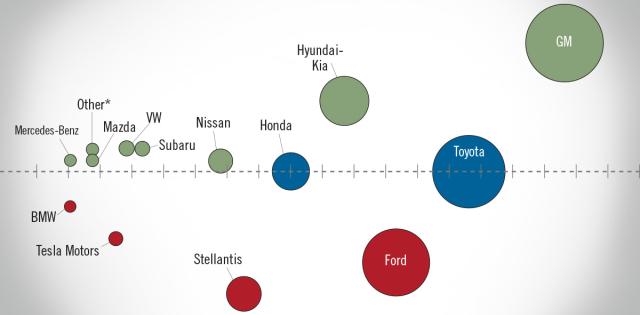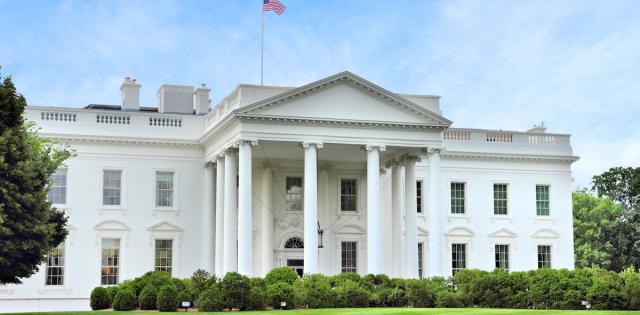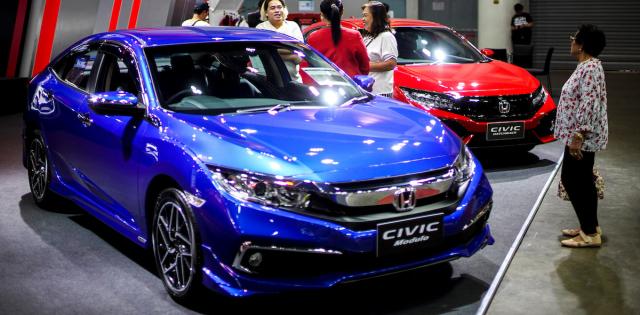United States Energy Secretary Jennifer Granholm joins dealers at the NADA Live Stage in Las Vegas to discuss the Biden Administration’s plans for EVs; discussed infrastructure, affordability and plug-in hybrids.
U.S. Secretary of Energy Jennifer Granholm made a surprise visit to the NADA Show Live Stage on Feb. 2 and praised NADA for its efforts to boost dealers' knowledge of electric vehicles (EVs) through programs like ElectrifIQ and the EV Solutions Center display at the Show.
Education is a key component of increasing EV acceptance and dealers play a critical role because they are on the front lines educating consumers, she said. And the Secretary emphasized that, despite some consternation over consumer EV take up, the administration should not “tap the brakes” on EV deployment.
But dealers worry that other factors besides education are hindering EV sales. Among the factors worrying consumers are the lack of a robust charging infrastructure, the availability of federal EV tax credits for more models, the reduced efficiencies of EVs in cold weather and the higher up-front costs of purchasing a new EV compared to a traditional internal combustion engine (ICE) vehicle.
Jonathan Collegio, NADA's senior vice president of Public Affairs, pointed to a Cox Automotive study showing more EVs are sitting on dealership lots unsold when compared to ICE vehicles, and asked Granholm if it were time for the federal government to moderate its plans for EV take-up.
"I don't think we should be tapping the brakes at all," Granholm replied, and touted studies showing a steady rise in EV sales over the past 2-3 years, which she called an unprecedented growth trend for any new vehicle type in the history of auto sales.
Consumers need to adapt to the new technology, and the vehicles need to be more affordable, Granholm said, but EVs are the future. "It's just a question of time," she said. Once consumers feel confident that they can charge their EVs on long trips as well as at home, the rate of increase in EV sales will rise.
Jeff Aiosa, a Connecticut dealer and NADA's Regulatory Affairs Committee Chairman, said EV supply has been greater than demand at his dealerships, but hybrids and plug-in hybrids (PHEVs) sales are hot. "Those sell," he said. And OEMs are shifting more production back to hybrids and PHEVs from all-electric battery-operated vehicles (BEVs).
Granholm agreed that hybrids and PHEVs could serve as a bridge from ICE vehicles to EVs, and noted that federal tax credits apply to hybrids and PHEVs, just as they do for BEVs. “It is the step that will lead to [electrification],” she said. “We are bullish on that.”
With regard to charging infrastructure, Granholm said the federal government's $7.5 billion national EV initiative is aimed at improving charging infrastructure across the country. There are 176,000 chargers in service now, and 33 states have put out requests for proposals (RFPs) to boost their charging infrastructure. Seventeen states have already awarded contracts under the program, she said. "This year will be the year of implementation to fill the infrastructure gap," Granholm said.

Aiosa and Nate Sutton, CEO of Sutton Auto Team and a NADA Board Member, told Granholm of the concerns they are hearing from customers about range anxiety and the adverse effects of cold-weather operation on EVs. Some consumers also are worried about rolling electricity blackouts affecting their states when their power grids are under stress.
Granholm said customers just need to make some adjustments in their behavior. Customers make plans now when operating traditional ICE vehicles in cold weather – keeping their gas tanks filled up when the weather turns bad, for example – and they will simply need to plan for longer charging times when the temperature drops below freezing. As far as blackouts, Granholm said EVs will mitigate the problem through bi-directional charging, in which charged vehicles will be able to return electricity to the grid in times of high demand, and EV owners will be compensated for that.
Aiosa and Sutton also mentioned customer concerns about affordability, saying it can cost tens of thousands of dollars more to purchase a new EV compared to an ICE vehicle.
Granholm replied that about 10,000 dealers have registered with the IRS to administer the federal tax credit in the dealership at the point of sale, easing the tax-filing headache for consumers and making the credit feel more immediate.
She also mentioned that the $7,500 per EV federal tax credit is "stackable" with any available state EV incentive. Maine, for example, offers a $7,500 tax credit, so consumers can stack that on top of the federal credit for a $15,000 total vehicle credit.
"Incentives matter and we need more of them," Aiosa agreed, adding that the economy and the high cost of new vehicles have customers looking more and more at pre-owned vehicles. "There's a huge demand for pre-owned vehicles," he said.
But most incentives apply only to new-vehicle sales. Dealers would like to see more federal incentives for pre-owned vehicle sales, Aiosa said, calling it of paramount importance in terms of affordability for some customers.
Dealers also were concerned about the EV supply chain and whether more parts production could be shifted to the U.S. so consumers can take advantage of the federal tax incentives, which require a percentage of domestically sourced parts.
Granholm said President Biden is "totally committed to bringing the supply chain back to the U.S." and pointed out there is a 30% tax incentive for OEMs to shift production to the U.S. "OEMs want their customers to qualify for the tax credits," Granholm said.










